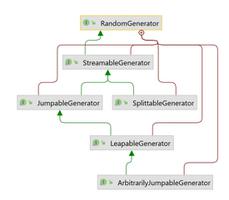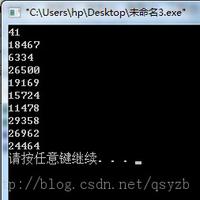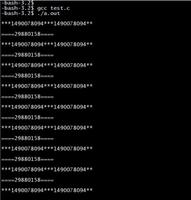C ++程序生成给定数字范围的随机序列
首先,让我们讨论rand()函数。rand()函数是C ++的预定义方法。在<stdlib.h>头文件中声明。rand()用于生成范围内的随机数。这里min_n是随机数的最小范围,而max_n是随机数的最大范围。因此,rand()将返回min_n到(max_n – 1)之间的随机数,包括极限值。在这里,如果我们将下限和上限分别称为1和100,则rand()将返回从1到(100 – 1)的值。即从1到99。
算法
BeginDeclare max_n to the integer datatype.
Initialize max_n = 100.
Declare min_n to the integer datatype.
Initialize min_n = 1.
Declare new_n to the integer datatype.
Declare i of integer datatype.
Print “The random number is:”.
for (i = 0; i < 10; i++)
new_n = ((rand() % (max_n + 1 - min_n)) + min_n)
Print the value of new_n.
End.
示例
#include <iostream>#include <stdlib.h>using namespace std;int main() { int max_n = 100; int min_n = 1; int new_n; int i; cout<<"The random number is: \n"; for (i = 0; i < 10; i++) { new_n = ((rand() % (max_n + 1 - min_n)) + min_n); //rand() returns random decimal number. cout<<new_n<<endl; } return 0;}输出结果
The random number is:42
68
35
1
70
25
79
59
63
65
以上是 C ++程序生成给定数字范围的随机序列 的全部内容, 来源链接: utcz.com/z/317090.html








